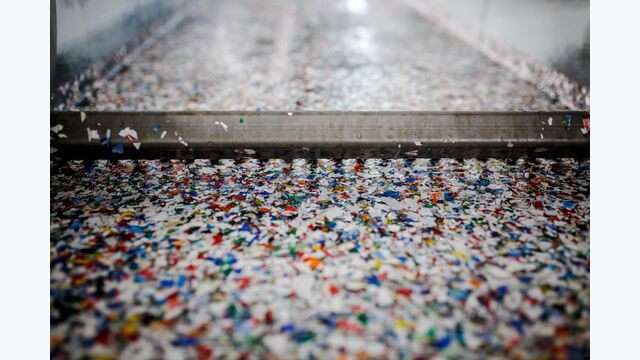Recycling : The policy conflict between circularity and toxicity

The problem of hazardous substances in a circular economy typically arises in two ways. The ambition to retain materials as long as possible in the economy can also keep substances that are to be phased out. For example, antique vases may contain mercury, while plastics may contain PCBs. Many different types of substances are also mixed in the collection of waste. For example, in a separate collection of plastics, different polymers are mixed. Modern recycling facilities can partially separate different polymers. But depending on the use, for example, different plasticizers or flame retardants are added to the plastic. In total, over 6,000 different chemicals can be found in plastics. What comes out of the recycling process, i.e. the secondary resources, are therefore typically more contaminated than the virgin plastics, based on fossil fuels.
Hazardous substances should preferably be limited upstream in products. However, less than a small percent of all hazardous substances within the EU are regulated through bans, permits, threshold limits, or information obligations. This since many hazardous substances fulfill an important technical function in products. The lack of regulation upstream means that the responsibility for reducing the spread of hazardous substances ends up downstream. With little or no information about the presence of hazardous substances, the waste companies shall decontaminate the waste. At the same time, there is political pressure on these actors to increase circulation. A paradoxical responsibility that requires trade-offs. Increased recycling may increase the spread of hazardous substances, while strict requirements on hazardous substances may, on the other hand, reduce circulation.
Threshold limits vary widley
The use of secondary resources downstream is primarily regulated by threshold limits that state the maximum content of hazardous substances. In some cases, these limits are defined by customers, and in other cases by legislation. But downstream, just like upstream, limits are only defined for a few hazardous substances. Furthermore, the threshold limits are typically regarded as solid and safe, since they are produced through modeling. But modeling is based on uncertain assumptions. Consequently, the threshold limits differ significantly between countries. For example, the application of sewage sludge on arable land may contain 50 times higher levels of cadmium in Spain than in Denmark.
The threshold limits for using waste can be expressed either concerning the number of hazardous substances that leach, and thus the risk of exposure, or the total occurrence, thus the hazardousness. As secondary materials often contain elevated levels of hazardous substances, the waste sector tends to advocate a risk approach, and thus that the regulation should be adapted to a specific application and emphasize leachate concentrations. However, designing the legislation based on specific applications reduces the possibility of reusing the material in other areas. In a circular economy, toxicity needs to be assessed based on a situation where the material may migrate between different, sometimes unexpected areas of use. From a long-term perspective, a hazard perspective and thus regulation of total concentrations may therefore be preferable.
A problem with the threshold limits is also that hazardous substances are regulated in relation to the mass of the material (e.g. mg cd/kg mass). Most important is thus that the circulation is as pure as possible, rather than bringing any benefits. In order to put the benefits, and thus circulation, in focus, hazardous substances need instead to be regulated concerning function, resource content (e.g. mg cd/kg P), or avoided primary production. Only then, circulation can displace the linear economy.
Increased recycling may increase the spread of hazardous substances, while strict requirements on hazardous substances may, on the other hand, reduce circulation.Nils Johansson, KTH
In order to improve the management of hazardous substances in a circular economy, reflexive perspectives are thus needed, which go beyond the prevailing focus on the potential, to focus on conflicts, problems, and trade-offs. For example, rather than adapting decontamination processes downstream to the products, which is the starting point of the contemporary value chains. Producers should adapt production development and the use of chemicals to the possibilities of circulation and decontamination downstream.
Further Information
Read more in the project's final report; "The policy conflict between circularity and toxicity: Problems, perspectives, and strategies", which can be downloaded from here.
The project was financed by the Swedish Research Council for Sustainable Development, FORMAS.


